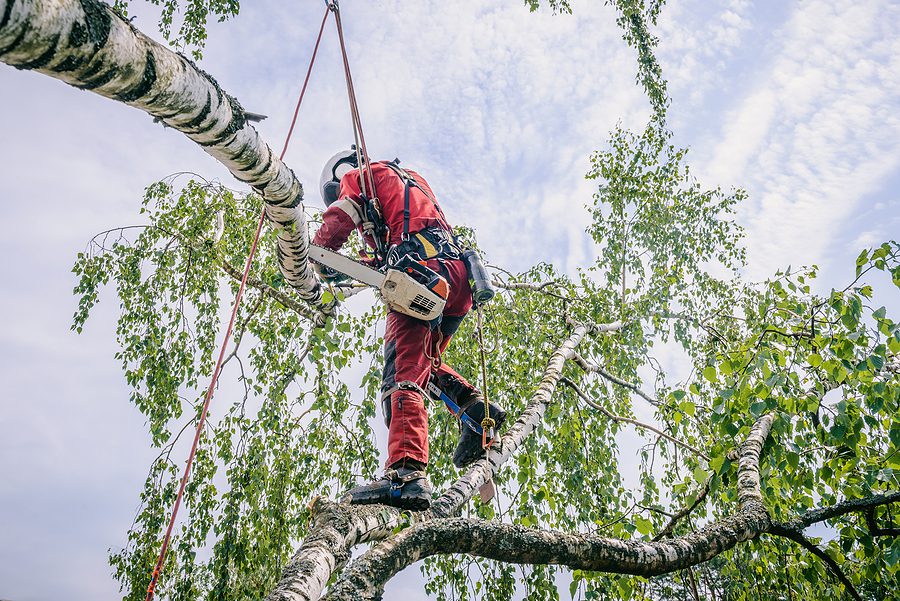Top Unsafe Tree Signs to Look for In Albuquerque

Albuquerque trees can cause accidents in many different ways. Most of these situations are quite predictable. This is why you should be aware of the signs of danger. Then you will be able to take appropriate action before anything happens. With that in mind, let’s take a look at the signs that you should look for in trees.
You have a sick tree
Although identifying diseased trees isn’t always simple, there are a few telltale indicators you should be aware of. Many diseases may harm trees, so it’s important to watch out for these symptoms to determine your tree’s overall health. A diseased tree may develop into a dangerous one.
Premature drop of leaves
Is your tree losing its leaves or needles before it should be? Is your tree losing more leaves than it usually does? This may indicate that your tree is stressed by heat or water, but it may also indicate a more serious health issue, such as the fungal disease anthracnose. To be sure, have a professional arborist evaluate your possibly dangerous tree.
Wilting
Your tree may be wilting due to water stress, but it might also be an indication of something far more severe that could make the tree unsafe.
Vascular wilt disease is one instance of a very dangerous illness. This disease is brought on by a fungus that targets trees’ vascular systems. The tree stops getting water because of the virus. The leaves wilt because of this lack of water.
Presence of fungus in trees
A disease known as root rot may be indicated by fungus growing from the trunk surrounding the base of your tree. Overwatering may lead to root rot since it starves your roots of oxygen and fosters the growth of fungus. The disease has the ability to destroy the tree, damage its root system, and cause it to sag and maybe topple.
A musty smell coming from your tree or seeping from the base of the tree is another sign of root rot; however, do not mistake this seeping for sap. It’s advisable to get your tree inspected by an expert if you’re not sure.
Overgrown trees
Pruning trees on a regular basis promotes healthy development. Trees may get dangerously overgrown if they aren’t pruned. Overgrown branches have the potential to suddenly break because they become too heavy for the tree to hold. Furthermore, in strong gusts or after a lot of snowfall, overgrown trees are more prone to collapse or even topple down.
Trees that are overgrown should be inspected and trimmed right away since they pose a serious risk. Trees that are neglected may become dangerous and injure people, as shown by the Portage County man who was crushed by a huge falling branch. Thankfully, the nearby fire department came to his rescue. Despite some severe injuries, the individual made a full recovery.
You have a Dead Tree
Although they live a long time, trees do not survive forever. In addition to dying gradually over time, trees may sometimes pass away too soon from illness, mishaps, or exposure to extreme weather.
Keep an eye out for these indicators that your tree may be near death:
- Loss of barks
- No growth in the tree
- Increased woodpecker activity
- Sudden leaning
Hazardous trees are dead or dying trees that might topple over and cause injuries from falling limbs. Extreme weather, like the storms that often hit Northeastern Ohio, might cause them to collapse very easily. Dead trees may be significantly riskier to remove since they may not be structurally stable, which is another concern for safety.
It’s critical to assess your tree if you think it could be dead or dying so that people and property are not seriously endangered. Cleveland’s dead tree problem became so bad that the Cuyahoga County city had to take down 3,300 of its municipal trees.
Trees that block your visibility
A tree might nevertheless pose a risk even if it is not diseased or has not been properly maintained. If healthy trees obstruct vision, they may become dangerous. It’s time to trim your tree if it obstructs your view of pedestrian walkways or the right of way for passing cars. To keep your tree safe, a professional tree service might use a variety of methods, such as crown elevating and canopy trimming.
Trees getting closer to the power lines
It is quite hazardous when trees grow onto electricity cables. Trees that contact power wires run the danger of starting a fire or electrocuting someone in addition to cutting off the electricity. This is particularly true during extreme weather events, such as the one that happened in Lake County, when hundreds of people lost power due to fallen trees.
It’s critical that you get the problem assessed as soon as possible if your potentially dangerous tree is getting close to or touching electricity wires. Most of the time, trimming will take care of this issue, but sometimes, removal of the tree is required to ensure that it no longer poses a hazard.
It is never a good idea to do a do-it-yourself job near a power line since trees are quite harmful. To address these risky circumstances, contact a specialist who is licensed and insured.
Get the help of an expert
When you are dealing with a hazardous tree, you should always get in touch with a tree care expert. Based on the situation, you can expect to receive the best available solution. Then you will be able to go ahead and make sure that you no longer deal with any risk because of the tree you have.
